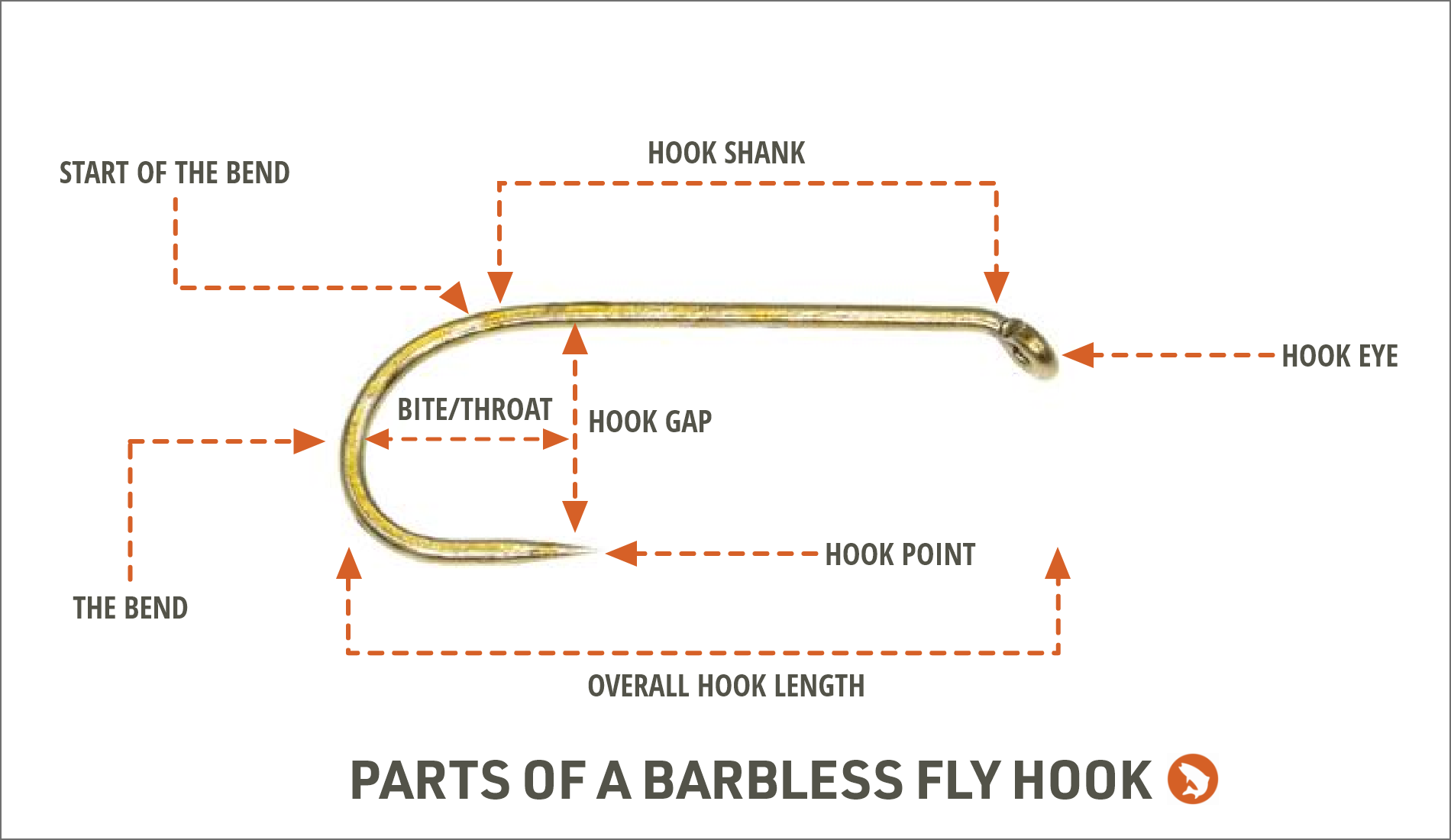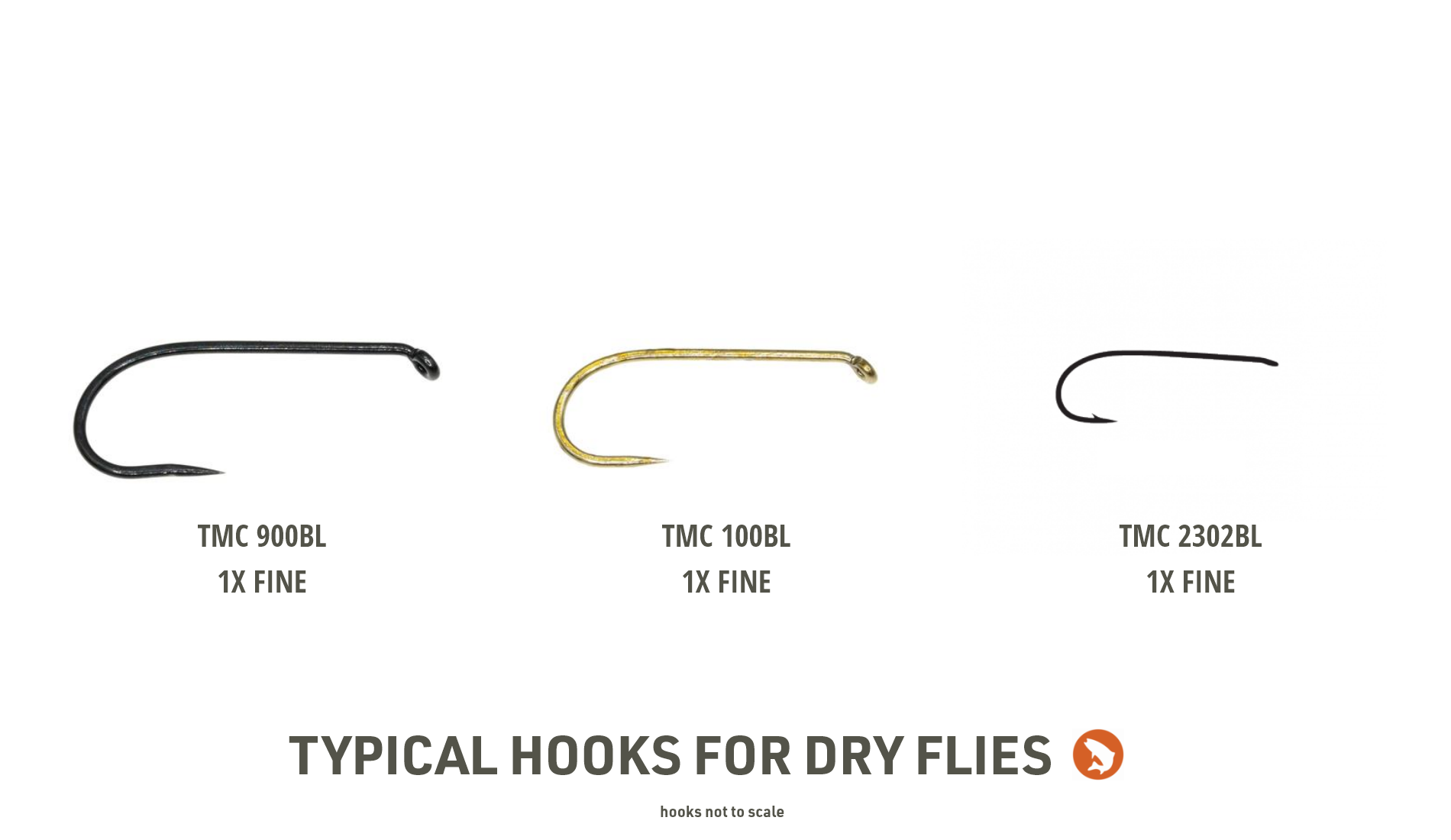Now that we have gotten some of the simpler things out of the way it is time to dive into the hard stuff. More specifically, how hooks are defined. When we look at hooks and hook models we will see that they are defined by two sets of parameters: the diameter of the wire used in making the hook and the length of the hook shank (image above for reference). Most of the time, when you are tying up flies or purchasing them they will be tied on standard-sized hooks and wire. As an example, Dry Flies are tied on a light-wire hook (for increased buoyancy), Nymphs on a heavy wire hook (for increased sinking ability), and Wet Flies on a standard wire (for light sinking). This can be distilled down to the simple idea of a bigger wire equals a heavier fly, and a lighter wire equals a lighter fly. If you were thinking, "Brandon what about streamers!" those my friend would typically be tied on a heavy or standard wire with an extra-long hook. It is kinda like a math problem honestly, If you want (x) then you must use (y).
Now, stay with me here because this might get a bit confusing. If you find yourself venturing away from standard hook sizes and wire you will find yourself dealing with the letter X. It is important to remember that the letter X is referencing your standard hook size and wire. So, any deviation you make from X will be one standard hook size and wire away from your X. Like I said, stay with me here.
When you find yourself dealing with the letter X you will typically be finding the terms 1X, 2X and 3X used, and within these categories, you get different variations. Remember that the letter X means your standard hook size and wire. Within these variations, you will see the terms fine, heavy short, long, and extra-long used as well. The terms Long and Short are a reference for the length of the hook compared to the standard(X), while the terms Fine and Heavy reference the wire used compared to the standard (X). Let's break it down even more.
If you were to come across a fly or package of hooks that were denoted as 1X Long you would be dealing with a hook that has a shank length that is one (1) size larger than X (your standard hook size). If you find yourself looking at a fly or package that is denoted as 2X Long you would be dealing with a hook that has a shank length that is two (2) sizes larger than X (your standard hook size). When you see the term 1X Fine you will be dealing with a hook that has been made with a standard wire (X) for one (1) size smaller. If you see 2X Heavy that means you are dealing with a hook that has wire made for a hook two sizes larger. Is this making sense yet? Hopefully, it is. Let's dive into the fly categories and see where we find each term used. That may make it a bit more clear.






